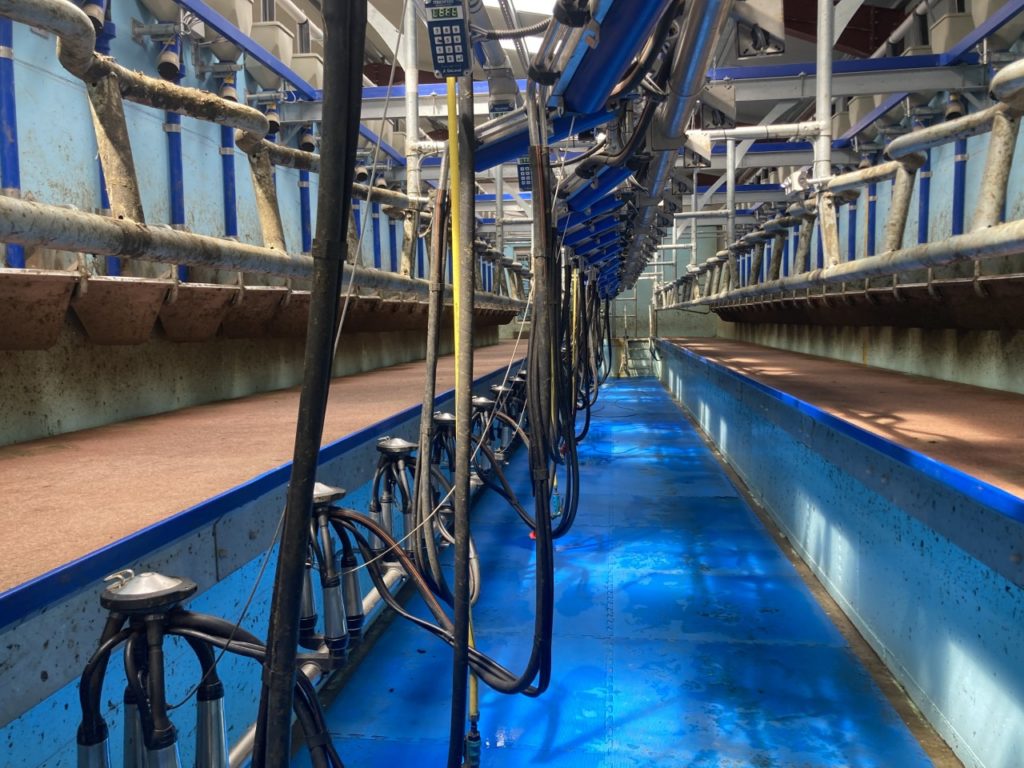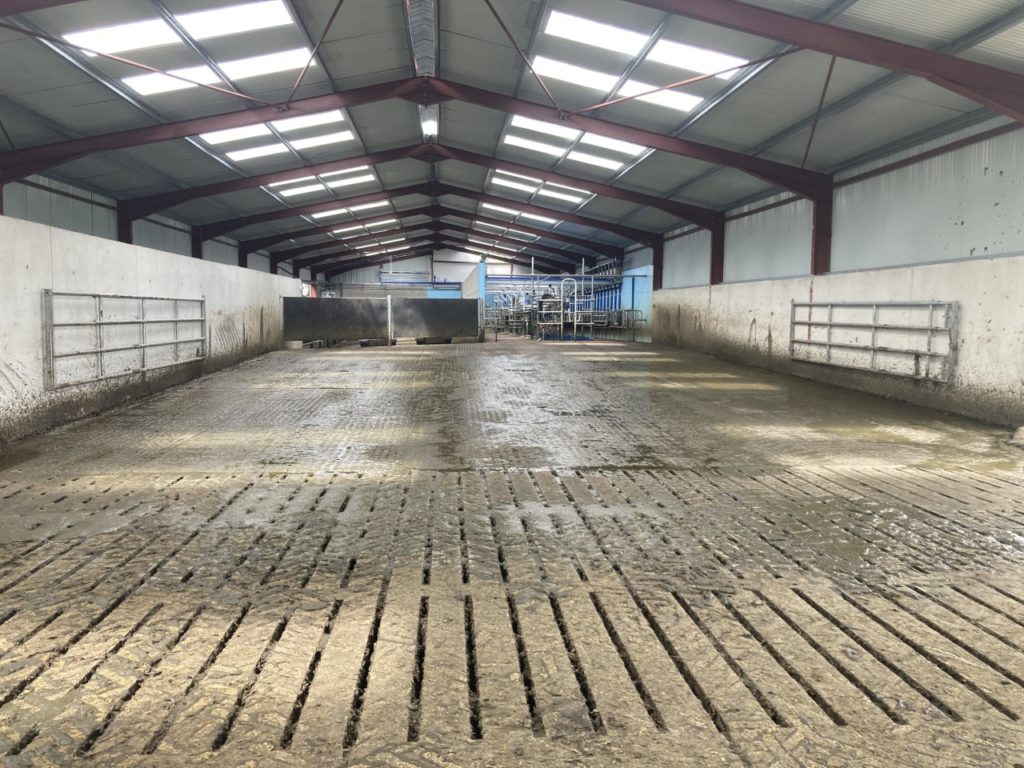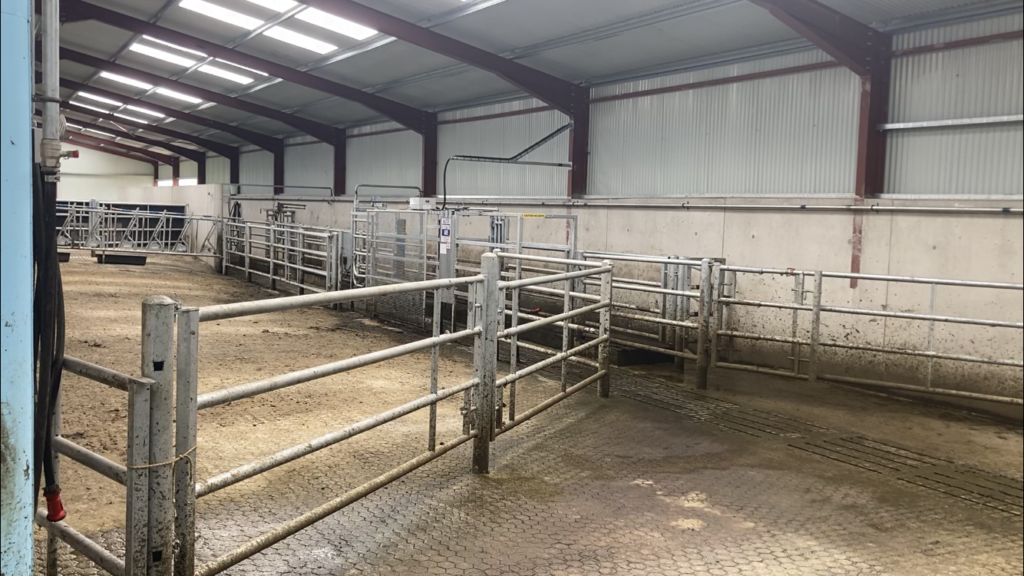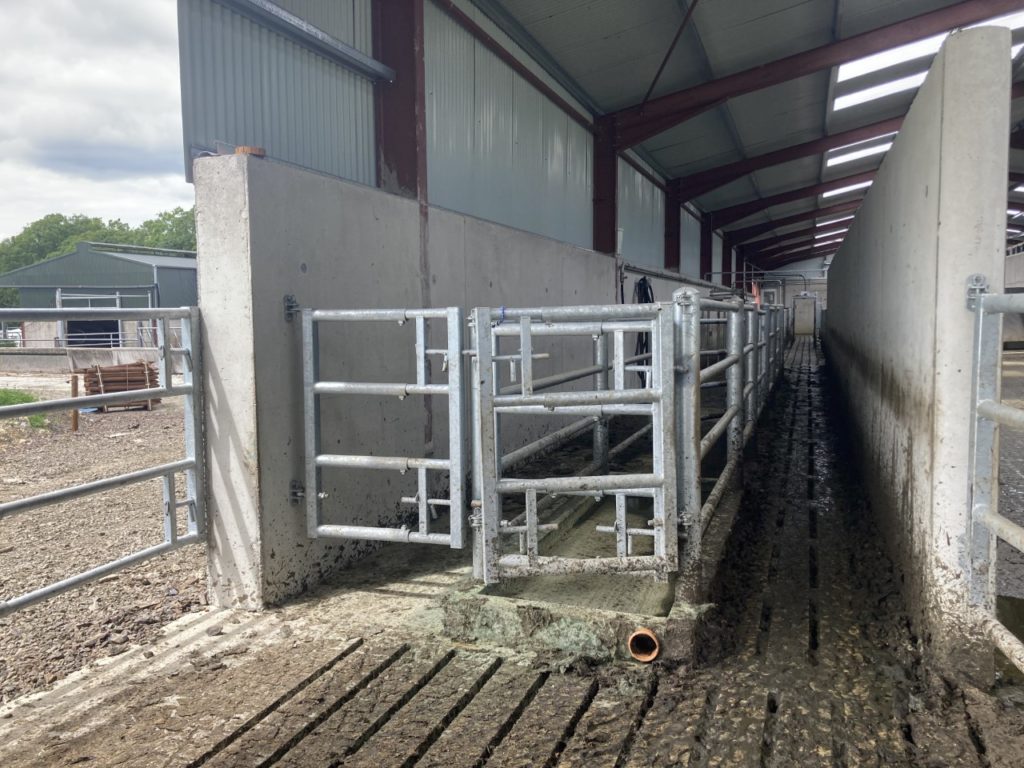For this week’s Buildings Focus, Agriland made the trip to Ballingarry in Co. Tipperary to speak to Kevin Croke about his new 24-unit milking parlour.
The Tipperary native farms alongside his father John Joe, milking 215 cows.
The duo, up until the end of March this year, were milking their herd of cows right beside the new milking facilities in their now old 16-unit parlour, that had been extended and upgraded over the years.
However, as cows numbers began rising over the years and the idea of spending more money on the old milking parlour not being a long-term solution, the father-and-son team decided to put in a new milking parlour on a greenfield site.

Speaking to Agriland on the farm in Tipperary, Kevin said: “Milking time was killing us as we increased cow numbers since I came home to farm full-time over a decade ago.
“In the end, we were milking up on 200 cows through a 16-unit parlour before we moved into the new 24-unit.
“The old parlour started off as a 6-unit, then a 10-unit before lastly being upgraded to a 16-unit, and we considered putting more money into it rather than building from scratch on a greenfield site, but we felt we’d be back to square one again in a few years time and would end up having to build from scratch anyway.
“It would have felt like dead money spent if we put anymore money into the old parlour, so we just bit the bullet and looked at going with a greenfield build and we are here now standing in it a year after we started.
“It’s not just the old parlour that was the issue, the collecting yard was too small and there was no way of making it any bigger and the increasing milk time wasn’t being helped through poor cow flow, so something had to change.”
Deciding on a parlour
Kevin said that he put a lot of research into what make and type of parlour he wanted.
Anything from a robot to a rotary, to a rapid/fast-exit and herringbone were all considered.
A robot was scratched off the list mainly due to the location of the yard, which is in the corner of their grazing platform, and also because the farm is split in two by a road.
A rotary was also crossed off the list as Kevin felt he would need to justify having a rotary, milking almost 300 cows.
He added that if anything, in the future, cow numbers would be edging back rather than forward, so a rotary wasn’t really a justifiable option for him.
Then a rapid/fast exit parlour came up in conversation but Kevin felt the time saved getting cows in and out of the parlour would only be lost again when washing up due to a greater area to wash down after milking.
So, the Crokes decided on a 24-unit herringbone parlour in the end, staying with what they knew best.

Landing on a 24-unit parlour
After some research and from seeing milking parlours on other farms, the Crokes landed on a DeLaval Midiline ML2100 swing-over milking parlour.
A key reason they chose DeLaval was the back-up service offered, which Kevin said he could not be without.
The parlour was sourced from Nigel Hanrahan of Remin Agri, who along with his team, built the parlour from scratch and carried out all of the plumbing work.
The parlour itself is equipped with automatic cluster removers; and auto-wash system; a dumpline; milk meters; the Evanza milking clusters; and a built-in milk recording set-up.
A batch feeding system was installed, but Kevin also has the option of giving individual cows more feed from the comfort of the pit.
In terms of the steelwork in the parlour, rump rails were installed to angle cows nicely into the individual feeding troughs. Air-powered auto entry and exit gates were installed at either end of the parlour.
A 22t meal bin serves the parlour and milk is stored in a 15,500L bulk tank which is closed off and can be accessed either through a roller by the milk truck, or by a small doorway for Kevin, John Joe and others.




Speaking about the parlour, Kevin said: “We are very happy since we moved into it. We have saved about two hours in the day in the new parlour.
“We are getting through cows quicker without changing our milking routine and that is being helped big time by better cow flow in and out of the parlour.
“In the old 16-unit, the roof was low and there was very little natural daylight coming in, so straight off, cows weren’t the most excited to come.
“It just wasn’t an inviting parlour and when cows were milked and walking out, it was a tight space for them to turn and get out around again, which led to a back up occurring and further delays getting on with milking.

“That’s why with the new parlour, we left probably double the space of the old parlour for cows to turn and head off down the exit race – so as to avoid any back up and thankfully, that issue is no longer.
“Overall, it’s [the parlour] a joy to work in. The cows are also very content and the only time you would have to leave the pit is for the last row of cows and that only happens when they are coming off good grass and they are full up.
“Otherwise, they flow through really well. Once you turn the machine on and start milking, it’s a very quiet and peaceful environment to work in for the operator.
Touching on the Evanza clusters, Kevin said: “We have definitely seen a reduced milking time with them compared to what we had before.
“We also are seeing little to no slippage. I can’t remember when I saw a cluster come off and when it did it was rare.


“In general, the whole job from start to finish is quicker, more efficient and a lot easier on the operator and more comfortable for the cow as well.
“By having a new milking parlour, it makes it a more inviting environment for relief milkers to come in and do the job without being stuck there all morning or evening like the old parlour.”
Making life easier outside the parlour
It’s not just the milking parlour that has made the job of milking easier, quicker and more efficient to do; work completed around the parlour aids with cow flow and management.
When building the new parlour, it was decided that everything would be all under the one roof.
This included the collecting yard, exit race, large handling pen and crush.
The collecting yard, which has a tank located at the back of it, can hold all 215 cows. There is storage space in the new build for 100,000 gallons of slurry and parlour washings.
Two standard, four-bar gates were hung halfway up the collecting yard, to keep cows at the entrance of the parlour so that once enough cows have been milked the gates can be closed.

Once cows exit the parlour, plenty of space has been left for cows to turn and head off down the exit race back out to pasture.
Incorporated into the exit race, which has a tank going the length of it which stretches the entirety of the 200ft long shed, is a drafting system which is getting quieter each passing day as the breeding season comes is nearer conclusion.
Either side of the exit race is a walkway which serves the crush adjoined to it, while on the other side, a large holding pen can be found.
At one end of the holding pen, Jourdain headlocking barriers were installed.
Kevin, who carries out all the artificial insemination (AI) on the cows himself, said when doing so, the headlocking barrier is much easier than if the cows were in the crush when all the headlock spaces are filled. If only two or three cows are for AI then he uses the crush.



This is because when cows are in the headlocking barriers they tend to sway either side and you can sway with them, whereas in the crush, when the cow is moving, you are snookered for room.
Kevin added that this holding pen could act as a large calving area if the other calving shed was at full capacity. It is sloped into the flow channel going along the exit race to take away any parlour washings and also any seepage from the pen.
A footbath is also located towards the back of the shed. All of the concrete in the shed is grooved.

Cost
The Crokes were able to avail of the Targeted Agricultural Modernisation Scheme (TAMS II) which saw them eligible for a 40% grant.
This went some way towards helping to bring the cost down. Currently, the new milking facilities are standing to Kevin and John Joe at €330,000 plus VAT.
Eugene Burke Plant Hire did all the excavation work on the site; Mark Geraghty carried out the concrete work; Philip Gorman erected the shed, which came from C and G Sheds in Edenderry; and Liam Fitzgerald completed out all the electrical work.
Speaking about the decision to go ahead and build new the milking facilities, Kevin said: “We are happy we did it and did it when we did. I’m glad we didn’t put anymore money into the old parlour, even though it owed us nothing, it wasn’t the answer to our problems long-term.
“I’m 32-years-of-age now and I’m looking at his new parlour with the expectation and hopefully all going well, that this will be a lifetime job for me.
“It’s a dream to milk and cows are very happy and content coming in and out of it compared to the old parlour.”

